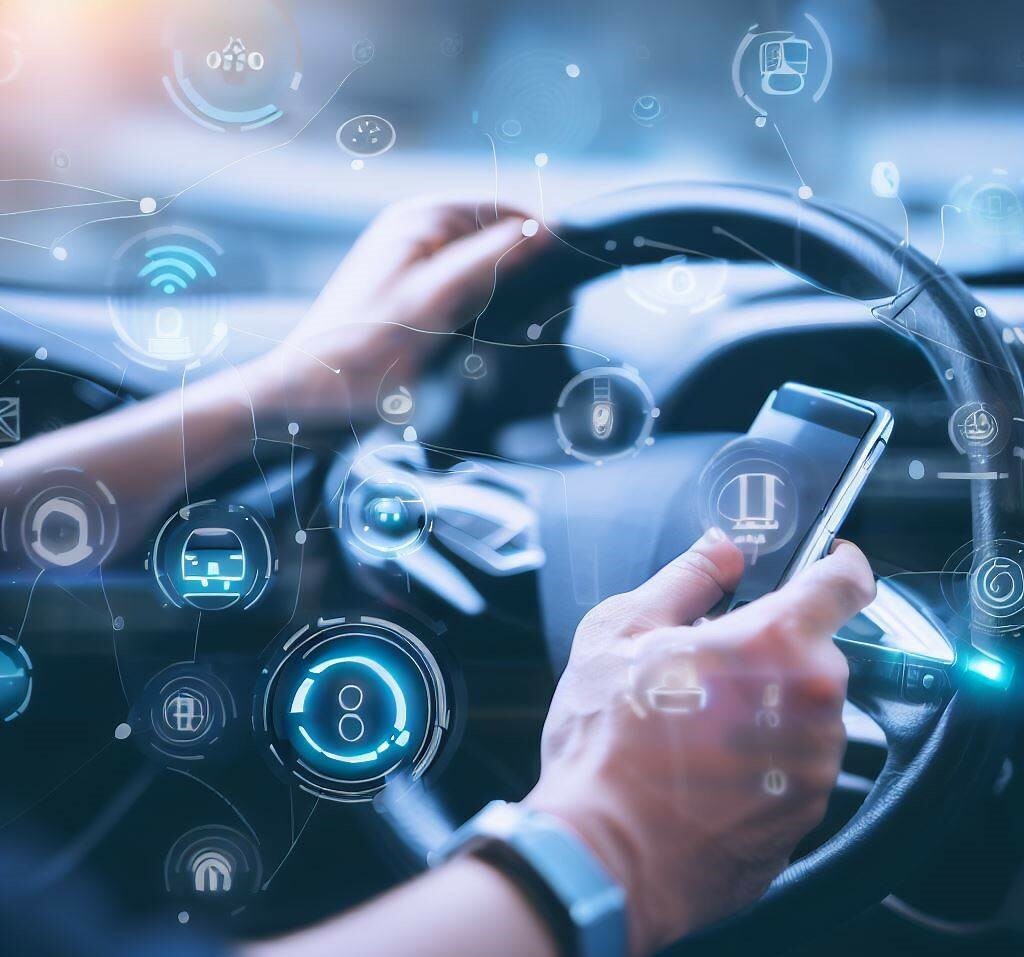IoT has rapidly gained popularity in recent years and is now making its way into vehicles. IoT in vehicles is the application of IoT technology in automobiles, with the aim of making driving safer, efficient, and more convenient.
IoT technology in vehicles enables the collection and analysis of vast amounts of data from various sensors, devices, and systems installed in cars. The data collected from IoT devices provides insights into how a vehicle is performing, allowing for predictive maintenance and reducing the risk of unexpected breakdowns.One of the main benefits of IoT in vehicles is the potential to improve road safety. IoT-enabled sensors can detect a range of factors, such as road conditions, traffic congestion, and weather, and feed this information to the driver to improve situational awareness. The technology can also alert drivers of potential hazards, such as accidents, pedestrians, or cyclists, thus reducing the risk of accidents.

In addition, IoT in vehicles can also make driving more efficient. By analyzing data from various sensors and systems, IoT technology can provide drivers with real-time information on fuel consumption, tire pressure, and other factors affecting a vehicle's efficiency. This information allows drivers to make more informed decisions while driving, such as adjusting their speed or route to save fuel.
IoT in vehicles also has the potential to make the driving experience more convenient for users. For example, IoT technology can enable remote monitoring and control of a vehicle, allowing owners to start their car or adjust the temperature before they even get inside. Additionally, IoT technology can provide drivers with personalized recommendations for restaurants, attractions, and other destinations based on their past driving patterns and preferences. This could make it easier for drivers to plan their routes and find the best places to stop along the way.
Furthermore, the integration of IoT technology in vehicles can also improve the overall transportation system. IoT sensors can be used to monitor traffic patterns and identify areas with high congestion, enabling transportation authorities to make data-driven decisions to improve traffic flow and reduce congestion. Additionally, IoT technology can be used to optimize public transportation systems, such as buses and trains, by providing real-time information on schedules and delays.
However, there are also some potential drawbacks to IoT in vehicles. One of the major concerns is data privacy and security. As more data is collected and transmitted from vehicles, there is a risk that personal information could be compromised or misused. It is important for car manufacturers and technology companies to take steps to protect user data and ensure that it is only used for legitimate purposes.
In conclusion, IoT technology is transforming the automotive industry, making driving safer, more efficient, and more convenient. While there are still challenges to be addressed, the potential benefits of IoT in vehicles are significant and are likely to drive further innovation in the years to come.
